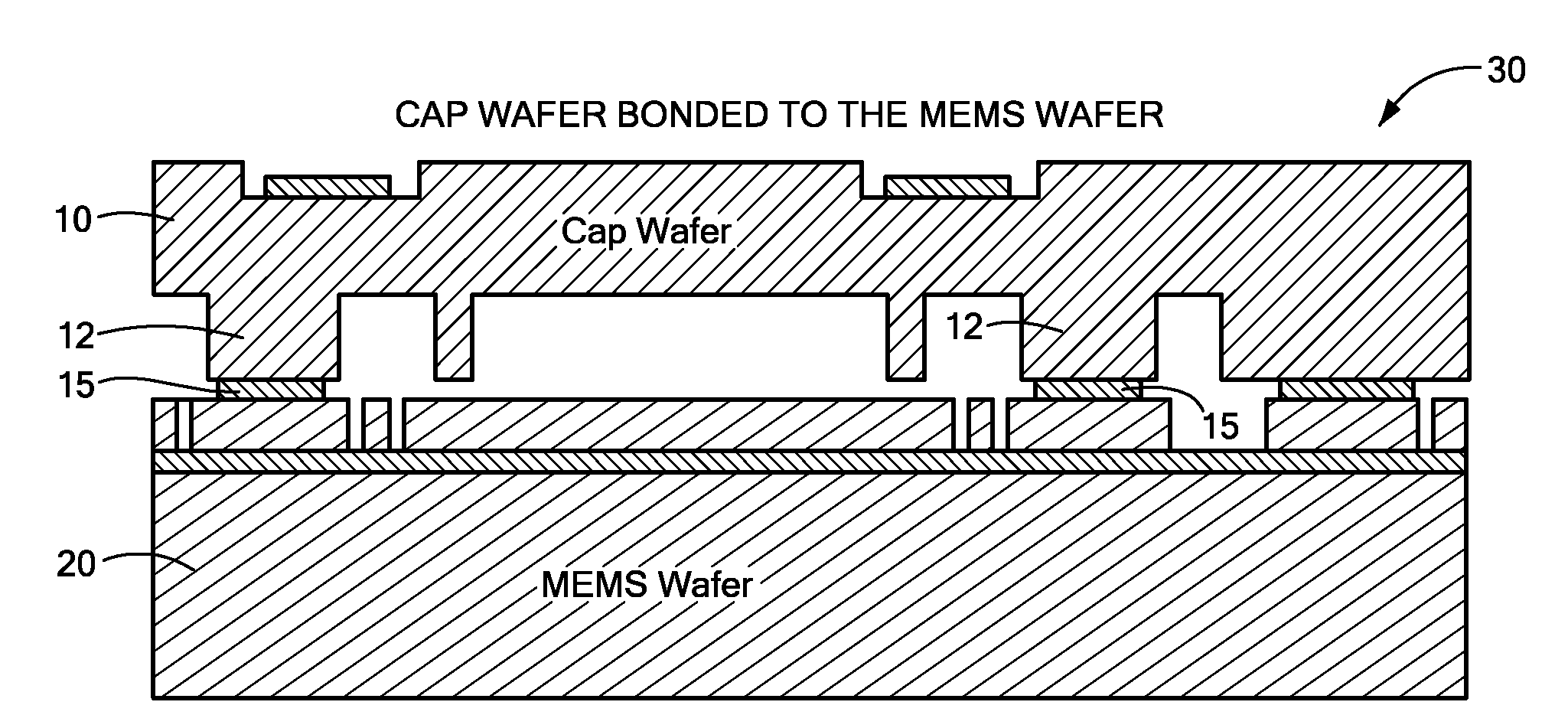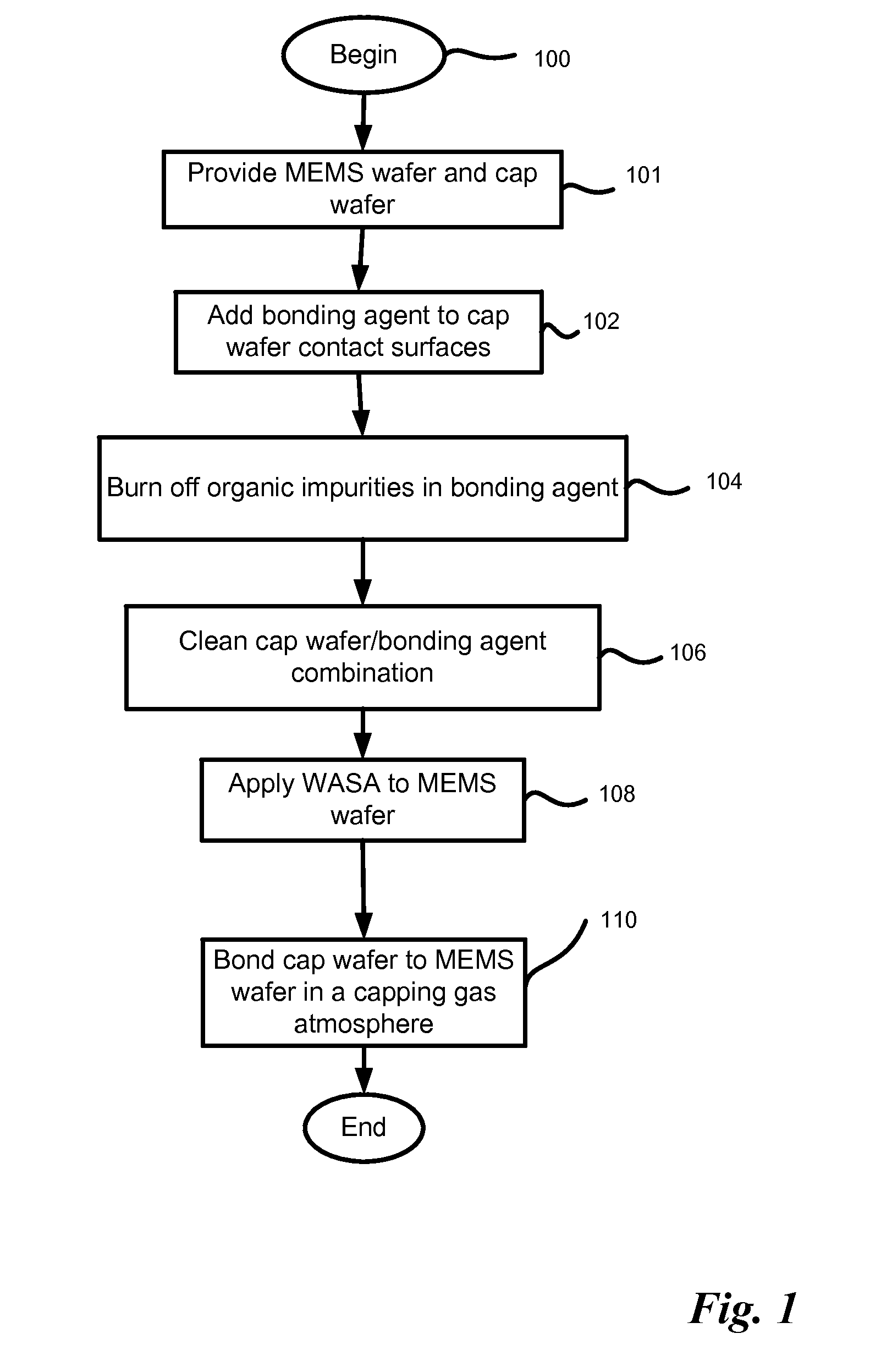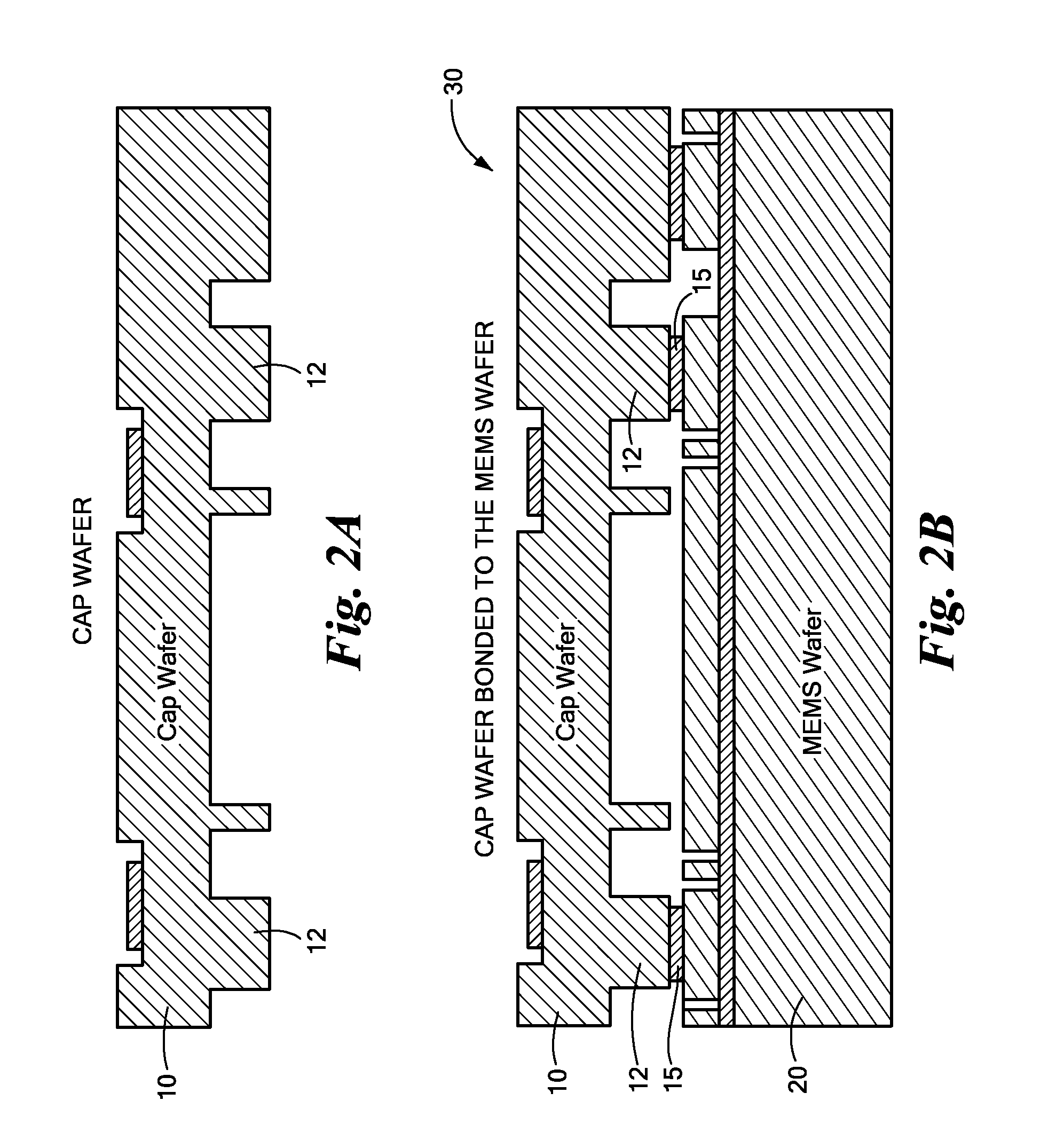Method for Capping a MEMS Wafer
- Summary
- Abstract
- Description
- Claims
- Application Information
AI Technical Summary
Benefits of technology
Problems solved by technology
Method used
Image
Examples
Embodiment Construction
[0012]Definitions: As used in this description and the accompanying claims, unless the context otherwise requires, a “percentage of a gas” in a gas mixture shall mean the ratio of the number of molecules of the given gas in a volume to the total number of gas molecules in the volume, multiplied by 100 percent.
[0013]In embodiments of the present invention, a process is provided for capping a MEMS wafer such that stiction in MEMS device structures is reduced. A glass bonding agent is added to a cap wafer on cap wafer surfaces that will contact the MEMS wafer. After the organic impurities in the bonding material are burned off, the cap wafer / bonding agent is subjected to a further cleaning process to remove other impurities in the bonding material, such as lead. For example, the cap wafer / bonding agent may be cleaned with an oxygen plasma. A WASA is used to coat the MEMS structures and the cleaned cap wafer / bonding agent combination is then bonded to the MEMS wafer in a substantially o...
PUM
| Property | Measurement | Unit |
|---|---|---|
| Fraction | aaaaa | aaaaa |
| Time | aaaaa | aaaaa |
| Angle | aaaaa | aaaaa |
Abstract
Description
Claims
Application Information
 Login to View More
Login to View More - R&D
- Intellectual Property
- Life Sciences
- Materials
- Tech Scout
- Unparalleled Data Quality
- Higher Quality Content
- 60% Fewer Hallucinations
Browse by: Latest US Patents, China's latest patents, Technical Efficacy Thesaurus, Application Domain, Technology Topic, Popular Technical Reports.
© 2025 PatSnap. All rights reserved.Legal|Privacy policy|Modern Slavery Act Transparency Statement|Sitemap|About US| Contact US: help@patsnap.com



